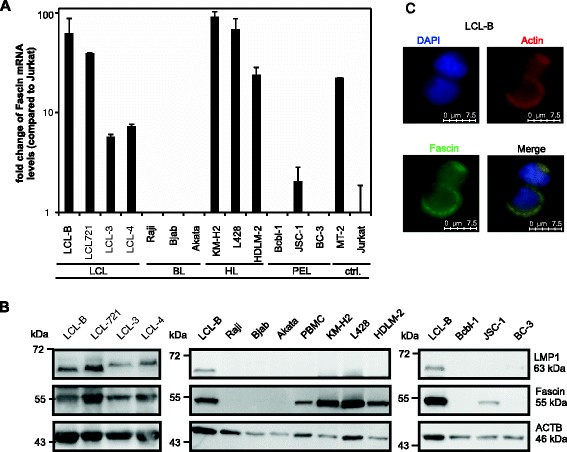Figure 1

Expression of Fascin in B-cell lymphomas. (A) Quantitative PCR (qPCR) of Fascin transcripts in transformed B-cells derived from EBV-transformed lymphoblastoid cell lines (LCL), from Burkitt lymphoma (BL), Hodgkin lymphoma (HL), and from primary effusion lymphoma (PEL) in comparison to Jurkat cells and Fascin-positive, HTLV-1-transformed MT-2 cells. Copy numbers were normalized to those of ß-Actin (ACTB) and thereafter normalized to relative Fascin expression in Jurkat cells. The means of two independent experiments are shown. ctrl. indicates control. (B) Detection of Fascin and LMP1 by immunoblot. In addition to the B-cell lines shown in (A), peripheral blood mononuclear cells (PBMC) from a healthy donor were analyzed. Detection of ACTB served as loading control. Slower migrating bands upon detection of LMP1 reflect HA-LMP1. (C) Immunofluorescence of EBV-transformed LCL-B cells spotted on fibronectin-coated coverslips using phalloidinX-TexasRed for detection of actin and anti-Fascin and secondary anti-mouse Alexa Fluor® 488 antibodies. Nuclei were stained with DAPI. Images were acquired using a LAS AF DMI 6000 fluorescence microscope equipped with a 63 × 1.4 HCX PL APO oil immersion objective lens. Jurkat cells (mock) as shown in Figure 2B served as negative control.
